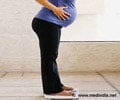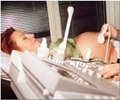What are your chances of carrying more than one baby in your current pregnancy? If you are over the age of 30 or undergoing treatment for infertility or have a family history of twins, it can increase the incidence of multiple pregnancies. In the last two decades the number of twin births in US increased by 70% and the number of women having triplets or more babies has quadrupled.
Answer the following questions to find out whether you are going to give birth to more than one baby in this pregnancy. Perhaps the information will prepare you for your multiple birth experience.
Tips for women having Multiple Pregnancy
| ❖ | Take nutritious food rich in protein, vitamins, and other nutrients.
|
| ❖ | Food rich in folate helps to avoid birth defects.
|
| ❖ | Calcium intake is essential to prevent high blood pressure during multiple pregnancy.
|
| ❖ | Take bed rest from middle of the second trimester(5th month). |
| ❖ | You may require 'cervical cerclage' (treatment to make your cervix stay closed to avoid miscarriage), if your cervix is physically weak and unable to stay closed. Consult with your doctor. |
| ❖ | Avoid intercourse from 20th week (or 24th week). |
Complications of Multiple Pregnancy
| ❖ | As the number of fetuses increase, the gestational period decreases, thus, resulting in premature birth and birth defects. |
| ❖ | Vanishing twin syndrome is commonly seen in case of triplets or quadruplets in which one of the fetuses disappears. |
| ❖ | Twin-to-Twin transfusion syndrome is observed in identical twins sharing placenta, in which the blood will be diverted from one fetus to another as the blood vessels are connected within the placenta. |
| ❖ | There may be an increased (Hydramnios) or decreased (Oligohydramnios) amount of amniotic fluid leading to maternal diabetes, congenital infections, premature rupture of membranes (before labor) and intrauterine growth restriction (poor fetal growth). |
| ❖ | The problems faced by the mother include high blood pressure, anemia, increased bleeding after delivery due to the over extension of uterus (postpartum hemorrhage) and cesarean delivery. |
References
- http://www.asrm.org/uploadedFiles/ASRM_Content/Resources/Patient_Resources
- http://www.chw.org/display/PPF/DocID/23222/router.asp
- http://www.chp.edu/CHP/P08033
 MEDINDIA
MEDINDIA
 Email
Email























